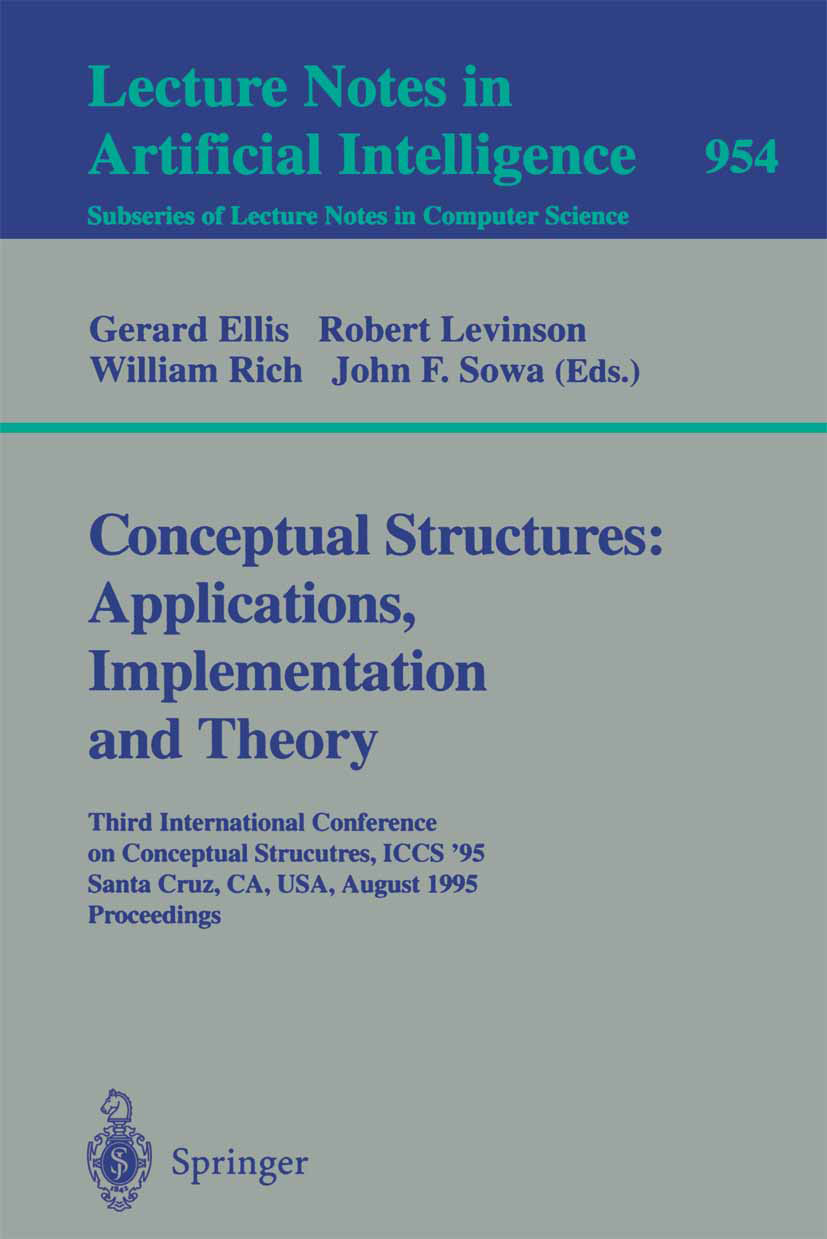| 书目名称 | Conceptual Structures: Applications, Implementation and Theory | | 副标题 | Third International | | 编辑 | Gerard Ellis,Robert Levinson,John F. Sowa | | 视频video | http://file.papertrans.cn/236/235041/235041.mp4 | | 丛书名称 | Lecture Notes in Computer Science | | 图书封面 |  | | 描述 | This book constitutes the proceedings of the Third International Conference on Conceptual Structures, ICCS ‘95, held in Santa Cruz, California in August 1995..Conceptual structures are a modern treatment of Peirce‘s existential graphs, a graphic notation for classical logic with higher order extensions. Besides three invited papers, there are included 21 revised full papers selected from 58 submission. The volume reflects the state-of-the-art in this research area of growing interest. The papers are organized in sections on natural language, applications, programming in conceptual graphs, machine learning and knowledge acquisition, hardware and implementation, graph operations, and ontologies and theory. | | 出版日期 | Conference proceedings 1995 | | 关键词 | Conceptual Graphs; Graph Operations; Graph-Operationen; Knowledge Representations; Konzeptuelle Graphen; | | 版次 | 1 | | doi | https://doi.org/10.1007/3-540-60161-9 | | isbn_softcover | 978-3-540-60161-6 | | isbn_ebook | 978-3-540-49539-0Series ISSN 0302-9743 Series E-ISSN 1611-3349 | | issn_series | 0302-9743 | | copyright | Springer-Verlag Berlin Heidelberg 1995 |
The information of publication is updating

书目名称Conceptual Structures: Applications, Implementation and Theory影响因子(影响力)

书目名称Conceptual Structures: Applications, Implementation and Theory影响因子(影响力)学科排名

书目名称Conceptual Structures: Applications, Implementation and Theory网络公开度

书目名称Conceptual Structures: Applications, Implementation and Theory网络公开度学科排名

书目名称Conceptual Structures: Applications, Implementation and Theory被引频次

书目名称Conceptual Structures: Applications, Implementation and Theory被引频次学科排名

书目名称Conceptual Structures: Applications, Implementation and Theory年度引用

书目名称Conceptual Structures: Applications, Implementation and Theory年度引用学科排名

书目名称Conceptual Structures: Applications, Implementation and Theory读者反馈

书目名称Conceptual Structures: Applications, Implementation and Theory读者反馈学科排名

|
|
|
 |Archiver|手机版|小黑屋|
派博传思国际
( 京公网安备110108008328)
GMT+8, 2025-11-12 05:14
|Archiver|手机版|小黑屋|
派博传思国际
( 京公网安备110108008328)
GMT+8, 2025-11-12 05:14


